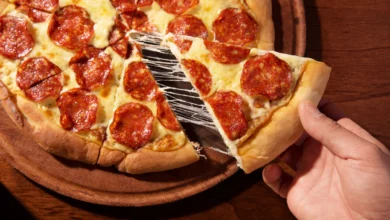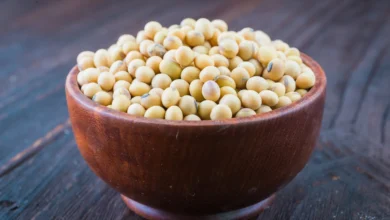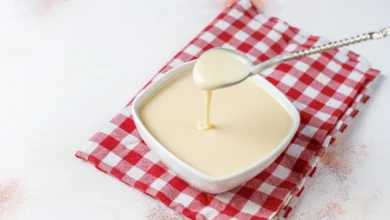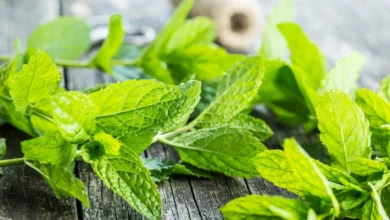Substitutes for Cooking Spray: Healthier and Tastier

You’re ready to bake those awesome cookies or get dinner sizzling, but uh-oh – the cooking spray is empty! Don’t panic, there are plenty of great substitutes for cooking spray that you probably already have at home.
Contents
- Substitutes for Cooking Spray
- Functionality Over Flavor
- What does cooking spray taste like?
- Why I Love This Recipe
- Ways to Use Cooking Spray
- The Best Non Stick Cooking Spray Substitutes
- Ingredients for DIY Cooking Spray
- How to Make Homemade Cooking Spray
- Frequently Asked Questions
- What can be used instead of cooking spray?
- How do you make homemade cooking spray?
- What is the healthiest cooking spray?
- What is a good substitute for cooking spray in an air fryer?
- Is cooking spray necessary?
- Can you use flour instead of cooking spray?
- What oil is best for air frying?
- Is cooking spray just oil?
- What is a disadvantage of cooking sprays?
- What is the most unhealthy cooking oil?
- What oil is best for cooking?
- How do you air fry without spray?
Substitutes for Cooking Spray
Now, let’s explore everything related to substitutes for cooking spray, and we will learn how we can make and use them.
Functionality Over Flavor
Let’s be honest: cooking sprays aren’t meant to add a huge burst of flavor to your food. They’re designed to be a non-stick agent, helping your food slide off pans and baking sheets easily. That means focusing on functionality is more important when ditching the spray.
What does cooking spray taste like?
Most store-bought cooking sprays have a very mild, neutral taste. That’s because they’re mostly made of simple vegetable oil or canola oil. You probably won’t even notice the taste. However, some sprays contain extra ingredients that can have a slight flavor, so always check the label if you’re unsure.
Your Non-Stick Swap Outs
Instead of cooking spray, try these options:
- Butter: Perfect for baked goods! It adds a delicious richness, but use it carefully – too much can make things soggy.
- Olive Oil: A healthy option for savory dishes. Its distinct flavor pairs beautifully with roasted vegetables or pan-seared meats.
- Other Oils: For something neutral, try other types of vegetable oil. These offer the same non-stick magic as cooking spray without a ton of extra flavor.
My Tip: Sometimes, I just rub a tiny bit of oil or butter directly onto the pan with a paper towel. Less mess, less waste, and it does the job perfectly!
Why I Love This Recipe
Making my own homemade cooking spray has been a total game-changer! It’s so easy, and I’m honestly blown away that I didn’t try this sooner. Now, I’ve got multiple bottles filled with various oils for different types of cooking. My favorite spray bottles are from Lehmans – they even come with little bands, so I can label them and know exactly what’s inside. Plus, with a homemade spray, there’s no need to worry about propellants or additives – it’s pure and simple!
is cooking spray bad for you? – sometimes, I see those store-bought cooking sprays and think about the chemicals they might have. You know, stuff like CFCs and other additives that don’t sound super healthy. It’s true that using the spray every once in a while probably isn’t a big deal, but making my own lets me enjoy that non-stick power without overthinking it. Plus, I can experiment with different oils!
Ways to Use Cooking Spray
Cooking spray is such a handy kitchen helper! Here are some of my favorite ways to use it:
Greasing Pans and Bakeware
Probably the most common use! Give your pans and bakeware a quick spritz of cooking spray to prevent food from sticking. Works on a variety of surfaces – metal, glass, even silicone!
Grilling
A light layer of cooking spray is a great option for greasing grill grates before cooking. It helps prevent food from sticking and makes for easy cleanup after your backyard feast.
Roasting Vegetables
Give your veggies a light coating of cooking spray before roasting in the oven. This will prevent them from sticking to the baking sheet and makes it easier to flip them halfway through cooking (which ensures they brown evenly).
Seasoning Popcorn
Are you a fan of homemade popcorn? After popping your corn, spray it lightly with cooking spray. It helps those delicious seasonings (salt, garlic powder, Parmesan cheese – whatever your favorite is!) stick better and prevents them from falling off.
Making Granola Bars
Cooking spray is an essential ingredient when making granola bars or snack bars. Greasing the pan before baking ensures they come out easily and don’t end up a sticky mess.
Preparing Dough
When you’re working with dough for pizza, pie crust, or anything else, a light coating of cooking spray can be a lifesaver! It prevents it from sticking to your hands, your counter, and your rolling pin – making the whole process smoother and much easier to work with.


The Best Non Stick Cooking Spray Substitutes
Let’s face it, running out of cooking spray can be annoying. Luckily, there are plenty of great substitutes you might already have at home:
Oil and a Refillable Spray Bottle
This is my go-to! Fill a refillable spray bottle with your favorite cooking oil (olive oil, vegetable oil, canola oil, avocado oil…the choice is yours). Now you’ve got a DIY non-stick spray. This way, you save money and can control the amount of oil used, ensuring just a thin layer covers the surface for cooking, baking, or grilling.
Parchment Paper
Perfect for baking! Line your baking sheet or cake pan with parchment paper, and your baked goods will come out easily without sticking. You can use this for roasting vegetables or grilling fish, too – it prevents a mess!
Butter, Lard, or Vegetable Shortening
These old-school cooking spray alternatives can work in a pinch! While they might affect the flavor of your food slightly, just melt a small amount (or use room temperature lard) and use a paper towel to spread a thin layer where needed.
Nonstick Cooking Pans
A high-quality nonstick pan can often let you avoid oil or cooking spray altogether! It’s designed to prevent food from sticking. If you do a lot of cooking, investing in a good nonstick pan is a smart move for your kitchen.
Thin Layer of Flour
An easy trick for baked goods: use a thin layer of flour to prevent sticking instead of baking spray. Just dust your baking pan or sheet with a small amount of flour and tap out any excess. This method works with plenty of recipes, but check to be sure the ingredients won’t be impacted.
Coconut Oil
A popular, healthy alternative to cooking spray! Just be aware that coconut oil has a lower smoke point and adds a subtle coconut flavor to your food. As with butter or lard, melt a small amount and use a paper towel to apply a thin layer.
RELATED: Substitutes for Dark Soy Sauce
Ingredients for DIY Cooking Spray
You’ll only need a few simple ingredients:
- 1 cup water: The base of our spray.
- 1 tablespoon vegetable oil (such as canola or sunflower oil): This is where the non-stick magic comes from! Choose a neutral-flavored oil.
- 1 teaspoon liquid lecithin (optional, but helps emulsify the oil and water): Lecithin is a natural ingredient that helps the oil and water mix well, so your spray doesn’t separate. You can find it at health food stores or online, but your spray will still work without it!
Important Tip: Since oil and water don’t naturally like to mix, you’ll need to give your DIY spray a good shake before each use!
How to Make Homemade Cooking Spray
- Grab a spray bottle: A clean, empty spray bottle works best. Make sure it sprays in a fine mist.
- Combine the ingredients: Carefully pour the water, vegetable oil, and liquid lecithin (if using) into the spray bottle. Close it tightly and shake well to thoroughly mix the ingredients.
Your homemade cooking spray is ready to use! Don’t forget to shake before using. You can store your spray in a cool, dry place for up to a month.
Important Note: Shake the bottle before each use to ensure that the oil and water are properly mixed.
This homemade cooking spray is a better choice than store-bought aerosol sprays. It allows you to control the ingredients and avoid any added chemicals.
Conclusion
Running out of cooking spray isn’t a kitchen crisis! From a refillable oil mister to a dab of butter, there are tons of great substitutes you likely already have at home. These swaps not only keep your food from sticking but often add better flavor and let you control unhealthy additives. Exploring alternatives to cooking spray opens up a world of healthier, tastier cooking!
_______________________________
Frequently Asked Questions
What can be used instead of cooking spray?
You don’t need that pressurized can! Feel free to dilute your favorite healthy, high-temperature cooking oil with water. Pure olive oil (not extra-virgin for high heat) or neutral-flavored oils like safflower or avocado oil all work well.
How do you make homemade cooking spray?
Homemade spray is the best! It’s 100% pure, naturally refined, and has no added chemicals or propellants. This means no gluten, soy, or canola oil – making it a healthy option even for Paleo or Keto diets.
What is the healthiest cooking spray?
I suggest sticking to pure oil with a high smoke point in a glass mister bottle. Avocado oil, extra-virgin olive oil (for lower heat), and grapeseed oil are awesome choices. Pour it in your bottle and spritz away!
What is a good substitute for cooking spray in an air fryer?
Absolutely! Canned sprays are loaded with additives like dimethyl silicone (found in paints!) and propellants like propane. Make your own – it’s cheaper and better! Mix one part oil with four parts water, shake, and you’re set.
Is cooking spray necessary?
A quick spritz of cooking spray helps keep food from sticking, but there are great alternatives! Butter, shortening, oil, and lard work similarly – just use a small amount.
Can you use flour instead of cooking spray?
This is a classic trick your grandma probably used! Butter the insides of your cake pan, then add a light dusting of flour. This homemade non-stick pan release is easy to make with ingredients you already have, and it’s surprisingly effective.
What oil is best for air frying?
Choose an oil with a high smoke point! Here are some great options:
- Avocado Oil (520 °F smoke point)
- Light Olive Oil (465-470 °F smoke point)
- Clarified Butter/Ghee (482 °F smoke point)
- Sunflower Oil (450 °F smoke point)
- Peanut Oil (450 °F)
- Grapeseed Oil (421 °F)
- Refined Coconut Oil (400 °F)
Is cooking spray just oil?
Unfortunately, conventional cooking sprays aren’t that simple. While they contain oil, they’re also loaded with questionable additives like dimethyl silicone (an anti-foaming agent that’s also in paints and cosmetics!) and soy lecithin.
What is a disadvantage of cooking sprays?
Here are a few things to consider:
- Dimethyl silicone: As mentioned, this common ingredient isn’t great to be cooking with.
- Soy lecithin: This emulsifier is often a leftover from soybean oil refining and likely contains pesticides or solvents.
What is the most unhealthy cooking oil?
The least healthy cooking oils include corn oil, soybean oil, sunflower oil, and coconut oil. Corn oil is full of polyunsaturated fatty acids that aren’t great for your body. Soybean oil has been linked to increased risks of heart disease, type 2 diabetes, and something called metabolic syndrome. Sunflower oil contains lots of Omega-6 fatty acids which in high amounts can cause problems. Lastly, coconut oil, while popular, can actually raise your LDL cholesterol levels (that’s the bad kind!). It’s always best to be aware of what’s in the food you’re cooking with!
What oil is best for cooking?
Here are some healthy and versatile options:
- Olive Oil
- Avocado Oil
- Coconut Oil (for lower heat cooking)
- Sunflower Oil (high smoke point, but consider better choices)
- Butter
How do you air fry without spray?
Yes! Put your food in a bowl, toss it with a few teaspoons of vegetable or olive oil and seasoning, then add it to your air fryer. This method works best for fresh meats and vegetables.




